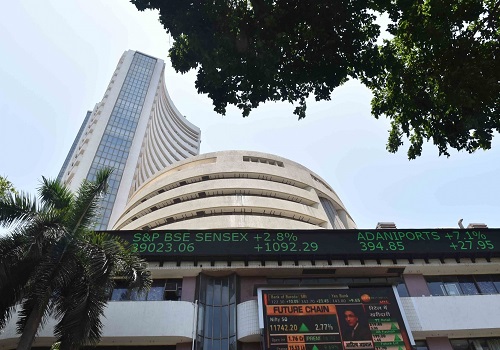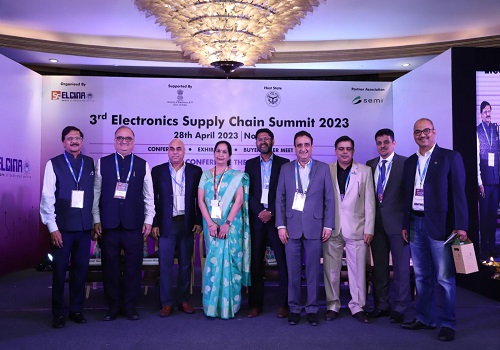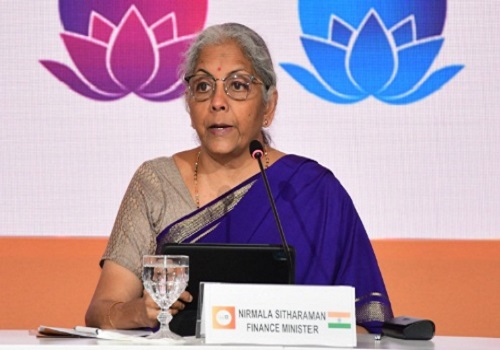Large scale exports key to make India a global electronics hub: Rajeev Chandrasekhar

Follow us Now on Telegram ! Get daily 10 - 12 important updates on Business, Finance and Investment. Join our Telegram Channel
Although the electronics sector is the first recipient of production-linked incentive (PLI) schemes, exporting at scale to the global market and increasing the share of total domestic value addition (DVA) cannot be simultaneously achieved without a competitive domestic ecosystem of components and suppliers, Minister of State for IT and Electronics, Rajeev Chandrasekhar said here on Monday.
Achieving the scale of exports and production will not only help the sector to grow domestically, but also meet the goal of the government's 'Make in India for the World' programme and achieve the target of a trillion-dollar digital economy by 2025-26, the minister said at an event here.
In the last few decades, the electronics trade has been dominated by China, but the world has entered a new era in the post-Covid phase, and there is an immense opportunity for India to become that trusted partner to the world as a source of technology products and services.
"During the period between 2014 to 2020 (pre-Covid), electronics manufacturing grew almost 250 per cent in India. To further catalyse this momentum, Prime Minister Narendra Modi launched a series of PLI schemes with incentives of $20 billion that have created significant expansion of investments, units and jobs in the sector," said Chandrasekhar.
India is today the world's second largest manufacturer of mobile phones in the world.
The 'Atmanirbhar Bharat' economic policies, with a focus on 'local for global' have set ambitious goals for electronics manufacturing of $300 billion, including exports of $120 billion by 2025-26, up from the current $75 billion.
"These are ambitious, but necessary targets, given the size of the opportunity and the competition for these opportunities from other countries," the Minister said during the launched of a report by the India Council for Research on International Economic Relations (ICRIER), in collaboration with India Cellular and Electronics Association(ICEA), in the capital.
India's electronic exports have nearly tripled between 2015 and 2022 -- from $5.8 billion to $16 billion.
According to the report, titled 'Globalise to Localise,' India should relentlessly focus on achieving global scale in exports with a short-term target of at least $30 billion.
This calls for temporarily easing localisation requirements, lowering custom duties and accelerating integration through free trade agreements (FTAs).
"The second phase should focus on increasing Domestic Value Addition (DVA) through creation of a competitive domestic ecosystem of ancillary suppliers," the report mentioned.
"The study finds that China and Vietnam have adopted the mantra of afirst globalise, then localize', which means in the initial years they were determined to achieve global scale in exports, and then shifted their emphasis to greater use of local contents," said Dr Deepak Mishra, Director and CE of ICRIER.
According to Pankaj Mohindroo, Chairman of ICEA, the country has resurrected this industry after near total collapse in 2014.
"As a first step, we used PMP to build a $36 billion mobile industry. We are now pushing for global exports via PLI and a total production of $300 billion. With exports as our key focus, we are working on policies that will increase domestic value addition over the next few years. The world is looking to us to deliver on our potential," said Mohindroo.
Electronics as a sector has jumped to the 6th largest export from India this year and mobile phones constitute the single largest component of electronics exports from India -- expected to contribute nearly 50 per cent of the total electronics exports by next year.
The report emphasised upon an urgent need for India to create a competitive domestic ecosystem of ancillary suppliers through technology upgradation programmes, holding sourcing fairs and introducing supporting industry development programmes.
"India today is the world's second largest manufacturer of mobile phones - with a clear focus on exports first followed by domestic value addition," said Chandrasekhar.












 320-x-100_uti_gold.jpg" alt="Advertisement">
320-x-100_uti_gold.jpg" alt="Advertisement">












